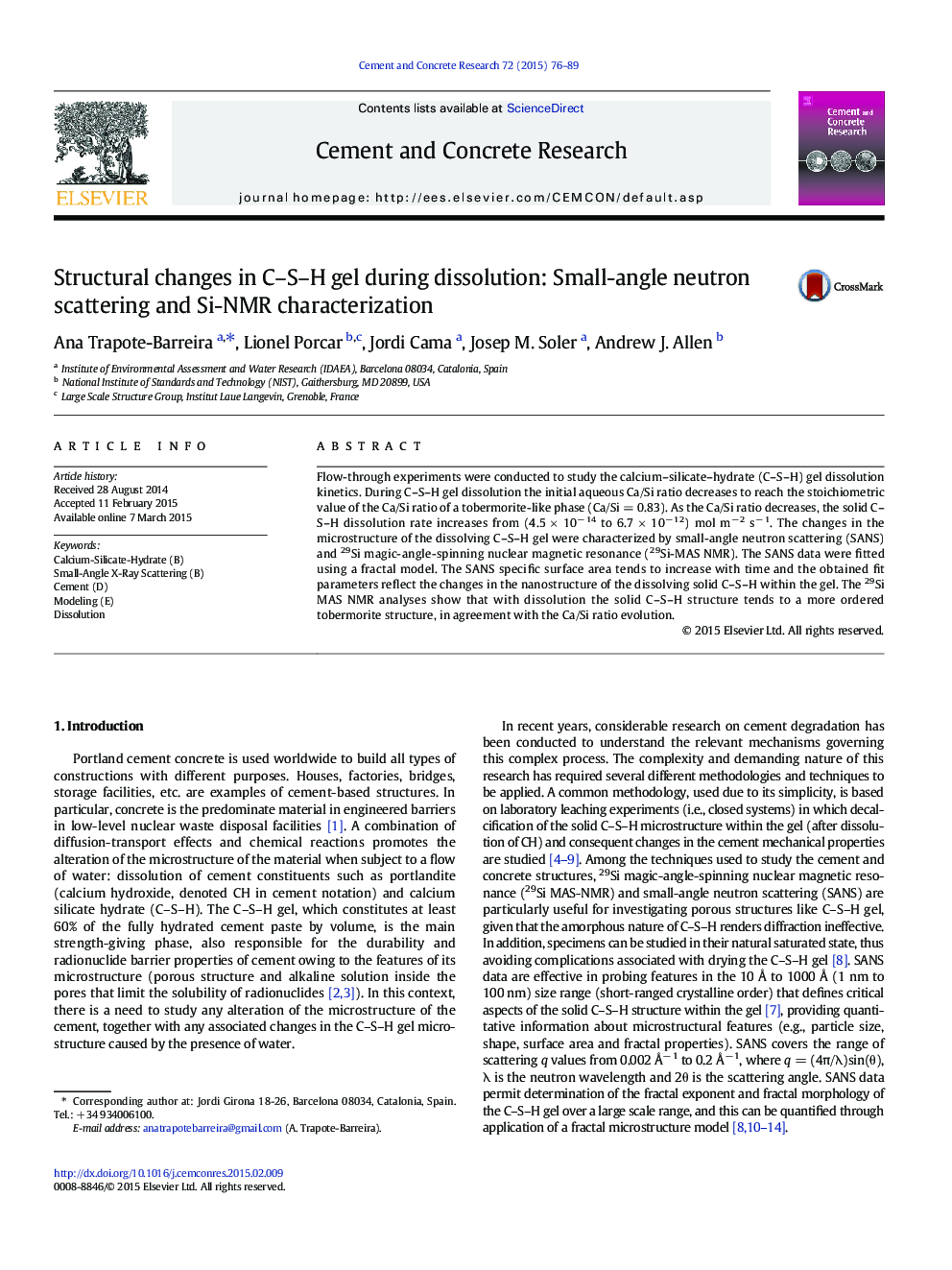| Article ID | Journal | Published Year | Pages | File Type |
|---|---|---|---|---|
| 1456162 | Cement and Concrete Research | 2015 | 14 Pages |
Flow-through experiments were conducted to study the calcium–silicate–hydrate (C–S–H) gel dissolution kinetics. During C–S–H gel dissolution the initial aqueous Ca/Si ratio decreases to reach the stoichiometric value of the Ca/Si ratio of a tobermorite-like phase (Ca/Si = 0.83). As the Ca/Si ratio decreases, the solid C–S–H dissolution rate increases from (4.5 × 10− 14 to 6.7 × 10− 12) mol m− 2 s− 1. The changes in the microstructure of the dissolving C–S–H gel were characterized by small-angle neutron scattering (SANS) and 29Si magic-angle-spinning nuclear magnetic resonance (29Si-MAS NMR). The SANS data were fitted using a fractal model. The SANS specific surface area tends to increase with time and the obtained fit parameters reflect the changes in the nanostructure of the dissolving solid C–S–H within the gel. The 29Si MAS NMR analyses show that with dissolution the solid C–S–H structure tends to a more ordered tobermorite structure, in agreement with the Ca/Si ratio evolution.
